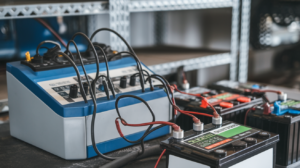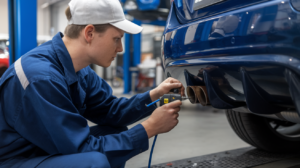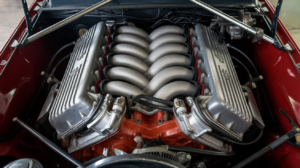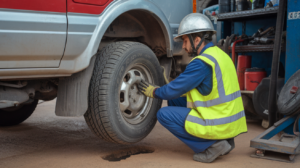Have you ever had a car come in with a check engine light, no obvious fault, and a frustrated owner who’s already spent AED 1,500 chasing ghosts? We’ve seen it more times than we’d like to admit. Leak detection is not just about finding a crack or a loose hose; it’s about understanding how modern vehicles breathe, seal, and fail under pressure.
In Dubai, where heat stress pushes seals to their limits, automotive diagnostics must go beyond guesswork. That’s where smoke machines change the game. Not fancy, not flashy, just brutally effective. They push vapor through systems, EVAP, intake, turbo, even AC ducts, and expose leaks that no scanner or visual check ever could. Vehicle inspection today is not about what you see, it’s about what you don’t. And if you’re not using smoke machines, you’re probably missing something.
What Are Smoke Machines and How Do They Work?
Let’s be honest, the name “smoke machine” sounds like something you’d find at a nightclub. But in a workshop, it’s a different beast. This tool doesn’t just puff out fog for dramatic effect; it’s a smoke leak detector, and it’s built for precision.
Here’s how it works. Inside the unit, a heating coil warms up a fluid, usually mineral oil or baby oil. Once heated, the fluid vaporizes and gets pushed through a nozzle into the system being tested. That vapor behaves like smoke, but it’s not smoke. It’s clean, non-toxic, and designed to mimic pressure flow inside sealed automotive systems.
Now imagine that vapor creeping through an EVAP system. If there’s a leak, even the tiniest one, the vapor escapes. You see it. You mark it. You fix it. That’s the magic. Some machines come with built-in compressors. Others rely on external air sources. Either way, the principle stays the same. Vapor in, leak out.
We’ve used smoke machines to find cracked vacuum lines in turbocharged engines, faulty seals in AC ducts, and even loose grommets in intake manifolds. One time, a technician spent two hours chasing a misfire on a G63 AMG. Plugged in the smoke leak detector, and boom, vapor pouring out of a hidden hose behind the firewall. Fixed in ten minutes. Diagnostic smoke isn’t just a tool. It’s a shortcut to clarity. And in Dubai’s heat, where rubber fails fast, it’s not optional. It’s survival.
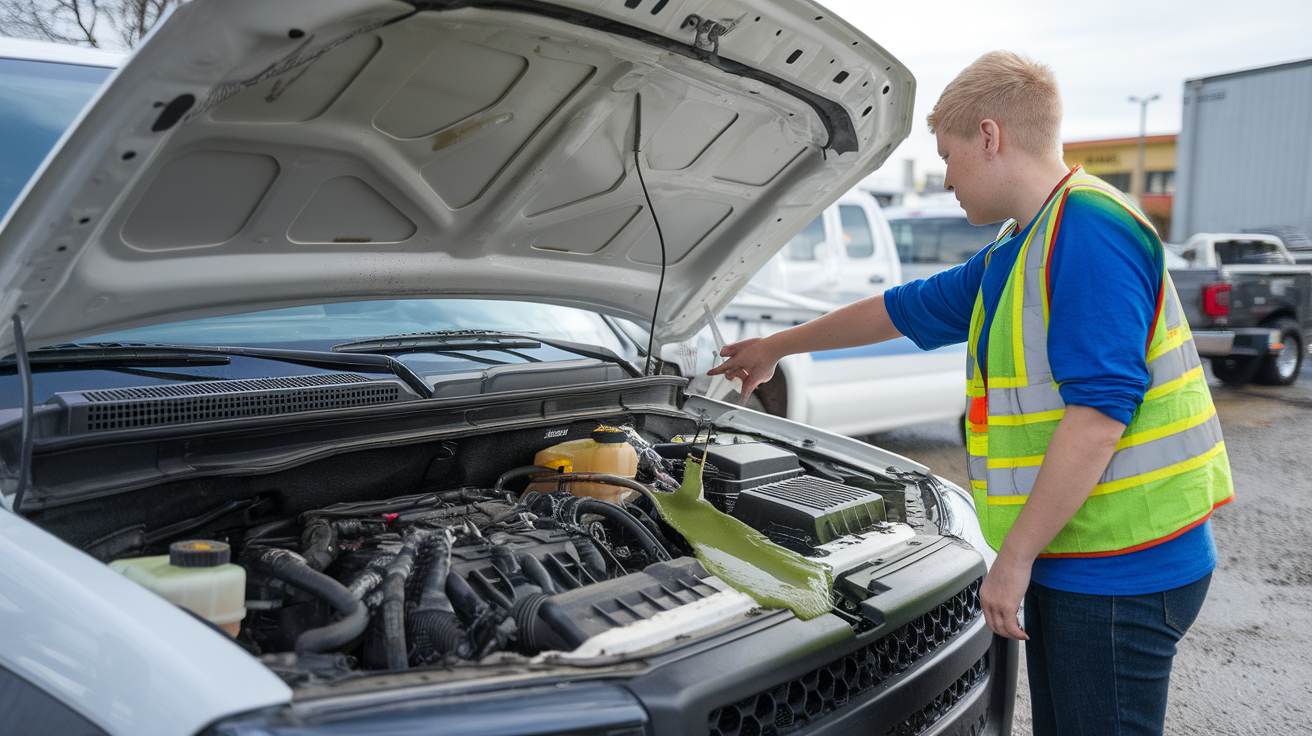
Automotive Smoke Machines | The Diagnostic Game-Changer
In modern workshops, automotive smoke machines have become indispensable for pinpointing elusive leaks across EVAP systems, vacuum lines, intake manifolds, and turbo setups. These machines inject a safe, mineral oil-based vapor into sealed systems, and any escaping smoke instantly reveals the leak source.These are the types of Automotive Smoke Machines
| Type | Best For | Key Features |
| EVAP-Specific Machines | Fuel vapor system diagnostics | Low-pressure output, DTC-safe testing |
| Dual-Mode Units | Turbo, intake, and vacuum systems | Pressure/vacuum modes, flow meters |
| Portable Handheld Models | Quick inspections, mobile techs | Compact, battery-powered |
Core Diagnostic Applications
- EVAP Leak Detection: Identifies vapor leaks without triggering false codes.
- Vacuum Line Testing: Finds cracks causing a rough idle or poor fuel economy.
- Turbo & Boost System Checks: Locates pressure loss in intercooler pipes and clamps.
- Exhaust & EGR Inspection: Reveals hidden gasket failures and sensor-impacting leaks.
Why They Matter?
Unlike visual inspections or scan tools, smoke machines offer real-time, visual confirmation. They reduce guesswork, prevent unnecessary part replacements, and dramatically improve diagnostic accuracy. In Dubai’s luxury market, where time and precision are everything, they’re not just helpful, they’re essential. Workshops that rely on comprehensive car inspection in Dubai already integrate smoke machines into their diagnostic workflows because they save hours of guesswork.
Systems That Require Smoke Machine Testing
Some leaks hide in plain sight. Others? They play hard to get. You can stare at a turbo pipe for an hour and still miss the hairline crack that’s bleeding boost. That’s why smoke machines are not just helpful, they’re essential.
Modern vehicles are packed with sealed systems. Each one is a potential leak zone. And in Dubai’s heat, rubber fails faster, plastic warps, and seals lose grip. You need a method that doesn’t rely on luck. Here’s where smoke machines earn their keep:
- EVAP system Triggers check engine lights when vapor escapes
- Vacuum lines cause a rough idle, poor fuel economy
- Turbo piping Leak here means lost boost, sluggish acceleration
- Intake manifold Cracks or loose gaskets affect the air-fuel ratio
- Intercooler hoses, Pressure drops, engine runs hot
- Exhaust system Leaks affect emissions and sensor readings
- Fuel vapor lines: Invisible leaks, high risk in closed environments
We had a case last summer, a Cayenne Turbo with inconsistent boost. Three shops missed it. Our tech ran a smoke machine test, and vapor poured from a split hose buried under the intake. Took five minutes to find, twenty to fix. Smoke machines don’t guess. They show. And when you’re dealing with vehicle systems this complex, that’s the difference between a quick fix and a week of trial and error. Leaks in intake manifolds or intercooler pipes often show up during a car engine inspection, but smoke testing makes them visible in seconds.
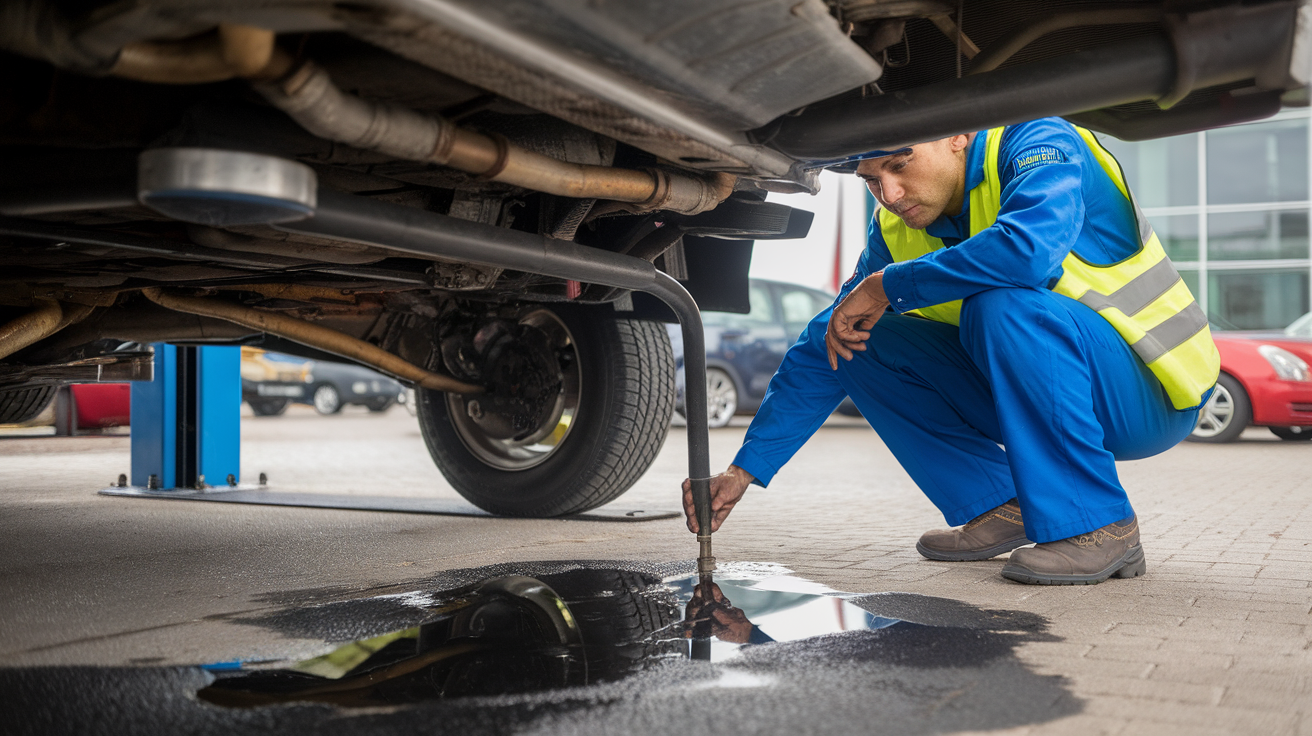
Why Traditional Leak Detection Methods Fall Short?
Let’s be blunt. Visual inspection? It’s guesswork with a flashlight. Soap spray? That’s for bicycle tires, not turbo systems. These old-school methods might’ve worked on carbureted engines, but today’s vehicles are sealed tight, sensor-heavy, and unforgiving.
We’ve seen it happen. A technician spends half a day chasing a rough idle. Checks the vacuum lines, sprays some soap, and listens for a hiss. Nothing. Then, plugs in the smoke machines, and vapor pours out from a cracked hose buried under the intake. Found in minutes. Fixed in twenty.
Traditional leak detection methods rely on symptoms. You wait for a misfire, a warning light, or a puddle. But by then, damage is done. Worse, they’re inconsistent. Soap bubbles don’t form under pressure. Visual checks miss micro-cracks. And acoustic tools? They’re only as good as the ear holding them.
Smoke machines don’t care about noise, heat, or guesswork. They push vapor through the system and show you exactly where the fault is. No drama, no delay. In Dubai’s climate, where heat stress warps plastic and softens seals, relying on outdated tools is not just inefficient, it’s risky. If you’re still using soap spray, you’re not diagnosing. You’re gambling. We’ve seen similar issues flagged in our guide on compression testers for engine diagnosis, where outdated methods often mislead and waste time.
Step-by-Step Process | Using Smoke Machines in Professional Inspections
There’s a rhythm to good diagnostics. It’s not just plugging in a scanner and hoping for a code. It’s knowing where to look, how to test, and when to trust the tools. Smoke machines don’t just help, they guide. Here’s how we use them in real inspections. No fluff. Just the actual diagnostic process.
- Seal the system
You start by isolating the system. Intake, EVAP, turbo—whatever’s being tested. Disconnect filters, block off open ends. If it’s not sealed, vapor escapes everywhere and tells you nothing. - Connect the smoke machine
Attach the hose to the right port. Intake boot, purge valve, and exhaust tip, depending on the system. Clap it tight. Loose connections give false positives. - Activate vapor
Turn on the machine. Within seconds, diagnostic smoke starts flowing. If the fluid is mineral oil or baby oil, you’ll get dense, visible vapor. That’s what you want. - Observe leak points
Use a flashlight. Look for wisps, puffs, or steady streams. We once found a leak in a McLaren’s intercooler pipe, barely visible, but enough to kill boost. The vapor made it obvious. - Document and repair
Mark the leak. Take a photo if needed. Replace the part, reseal the system, and run the test again. If no vapor escapes, you’re done.
This inspection workflow saves hours. No more guessing. No more swapping parts blindly. Just clear, visual proof. We’ve had techs misdiagnose EVAP codes for weeks. Plug in the smoke machines, and the leak shows up in five minutes. That’s not luck. That’s the process.
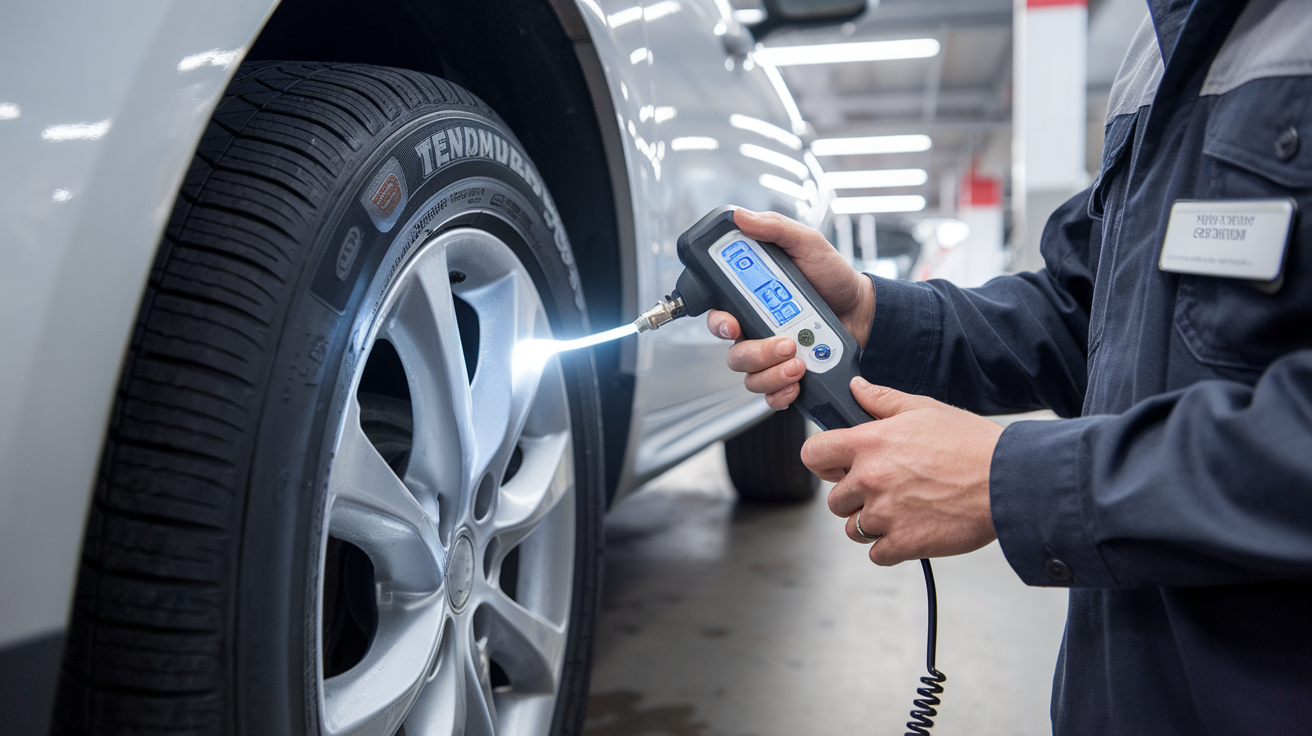
Benefits of Smoke Machines for Workshop Efficiency
Time is brutal in a workshop. Every minute spent chasing a leak is a minute not spent fixing the actual problem. That’s why smoke machines are more than just diagnostic tools—they’re time savers, trust builders, and profit protectors.
We’ve had cases where techs swapped three sensors before realizing the issue was a cracked vacuum hose. One quick test with a smoke machine, and the vapor pointed straight to the fault. No guesswork. No wasted parts. Here’s what they offer:
- Speed Vapor shows the leak instantly. No need to dismantle half the engine.
- Accuracy. You see the leak. Not a symptom. Not a theory. The actual fault.
- Customer trust. When you show a client the vapor escaping from a hose, they believe you. That’s rare.
- Reduced part replacement: No more swapping parts “just to see.” You fix what’s broken.
Workshop diagnostics in Dubai need to be fast and precise. Heat, dust, and high-end vehicles don’t leave room for trial and error. Smoke machines cut through the noise.
We’ve had clients walk in angry, convinced their car was “unfixable.” One vapor test later, they’re calm, nodding, and booking their next service. That’s not just efficiency. That’s reputation.
EVAP System Leak Detection | Why Smoke Machines Are Non-Negotiable
The EVAP system is one of those things most drivers never think about until the check engine light pops on and refuses to go away. You clear the code, and it comes back. You replace the purge valve, still there. That’s when you realize: this system doesn’t just fail, it hides.
EVAP stands for Evaporative Emission Control System. Its job is to trap fuel vapors and send them back into the engine. But if there’s a leak, any leak, it throws off pressure readings and triggers fault codes. And here’s the kicker: most EVAP leaks are invisible. No puddles. No smells. Just vapor escaping through a cracked hose or loose seal. That’s why smoke machines are non-negotiable. They push vapor into the EVAP system at low pressure. If there’s a breach, the vapor escapes. You see it. You fix it. No guesswork.
We had a case with a Nissan Patrol that failed emissions twice. The scanner pointed to a generic EVAP fault. Plugged in the smoke machine, and vapor hissed out from a hairline crack near the filler neck. Replaced the hose, cleared the code, and passed the test. In Dubai, where heat softens seals and warps plastic, EVAP leaks are common. Smoke machines make them visible. That’s not convenient. That’s a necessity. Drivers struggling with repeated emissions failures can also learn from our blog on why cars fail RTA inspections in Dubai, many of those cases trace back to undetected EVAP leaks.
Choosing the Right Smoke Machine for Your Inspection Service
Not all smoke machines are built the same. Some are slow, weak, and frustrating. Others? They’re workhorses. If you’re running inspections in Dubai, where heat and pressure expose every flaw, you need diagnostic equipment that keeps up. Here’s what to look for:
- Built-in compressor Machines without one rely on external air, which slows everything down.
- Fast vapor generation: You want dense smoke in seconds, not minutes.
- Adjustable pressure control: Too much pressure can damage sensitive systems. Too little? You miss the leak.
- Heating element quality: Cheap coils burn out fast. Look for ceramic or metal-core heaters.
- Portability: If you’re moving between bays or mobile inspections, weight and size matter.
We tested three units last season. One had great specs but took forever to heat. Another was portable but weak on vapor. The third, a mid-range model with a built-in compressor, hit the sweet spot. Found a turbo leak on a Q7 in under five minutes.
Smoke machines are not just plug-and-play. They’re part of your diagnostic equipment arsenal. Choose wrong, and you waste time. Choose right, and you build trust, speed, and precision. If you’re buying based on price alone, stop. You’ll pay for it later, in missed leaks and angry clients.
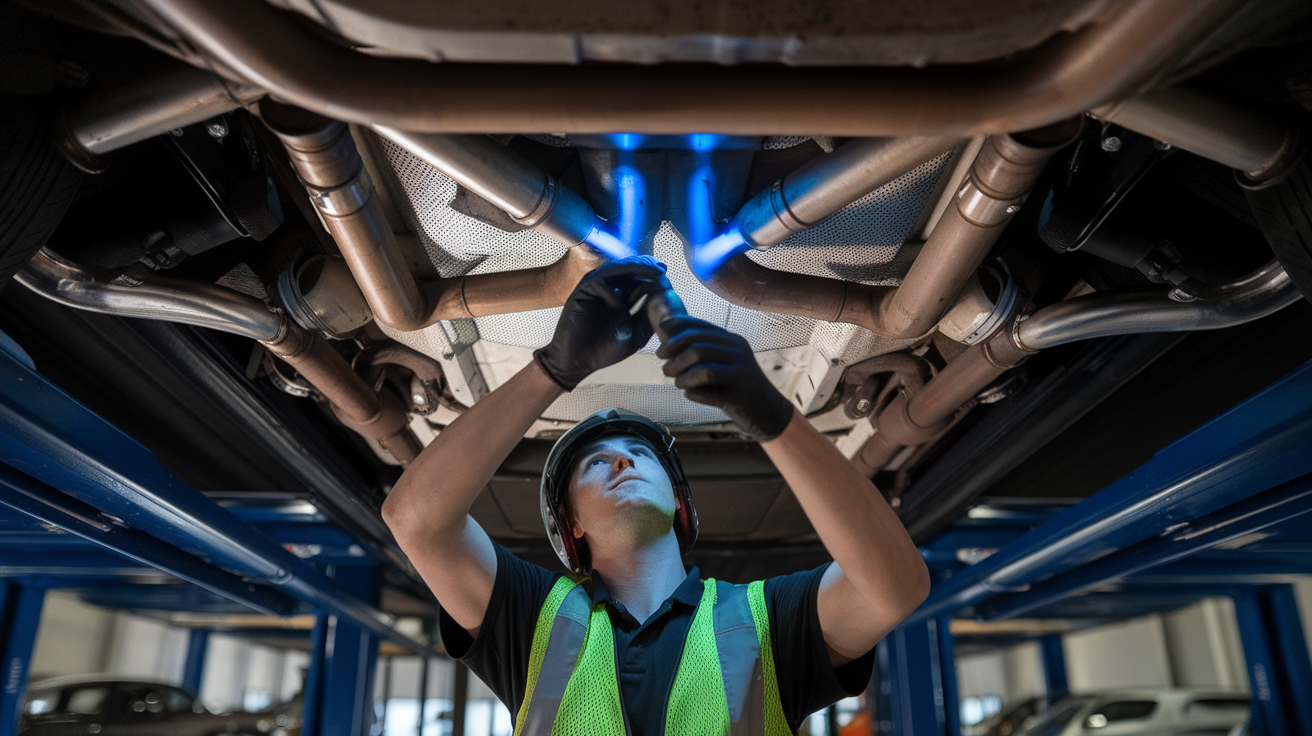
Real-World Use Cases | Smoke Machines in Action
Theory is fine. But in the bay, it’s the results that matter. We’ve seen smoke machines solve problems that had techs scratching their heads for days.
One case? A Range Rover Sport came in with a persistent check engine light. EVAP fault. The scanner said purge valve. Replaced it. Light came back. Another shop swapped the charcoal canister. Still no luck. We plugged in the smoke machine, and within seconds, vapor hissed out from a cracked filler neck hose, hidden behind the rear wheel liner. Fixed in under an hour.
Another time, a turbocharged Audi Q5 was losing boost. No codes, no visible damage. The leak detection test showed vapor escaping from a split in the intercooler pipe, right under the clamp. Missed by three visual inspections. These aren’t rare cases. It’s a daily reality. Smoke machines don’t just help, they reveal what scanners and eyes can’t. And in Dubai’s heat, that’s the difference between a fix and a failure.
Why Smoke Machines Are a Core Tool in Leak Detection?
In today’s high-stakes inspection environment, smoke machines aren’t optional; they’re essential. From EVAP faults to turbo leaks, they deliver unmatched leak detection precision and speed. Unlike guesswork or outdated methods, smoke testing offers visual proof, boosting diagnostic accuracy and reducing part-swapping errors.
Technicians rely on them to uncover hidden faults, validate repairs, and ensure inspection reliability across complex systems. Whether you’re chasing a ghost leak or confirming a fix, smoke machines turn uncertainty into clarity. For any workshop serious about results, they’re not just tools; they’re the backbone of modern diagnostics.

